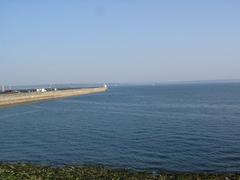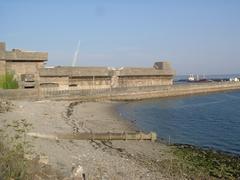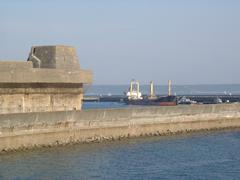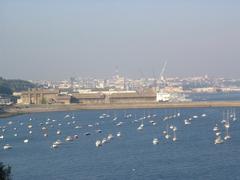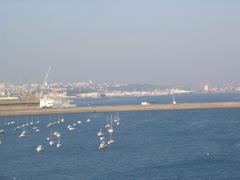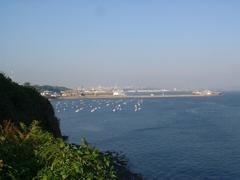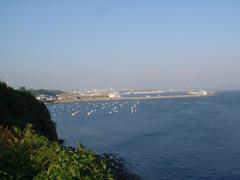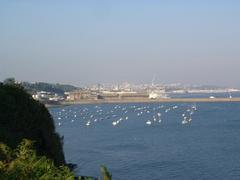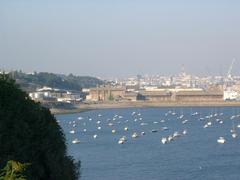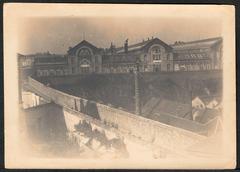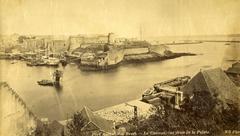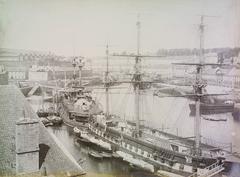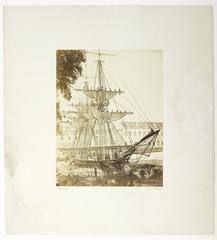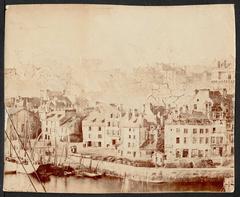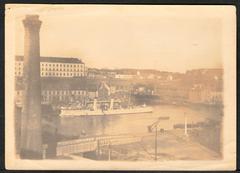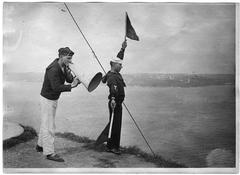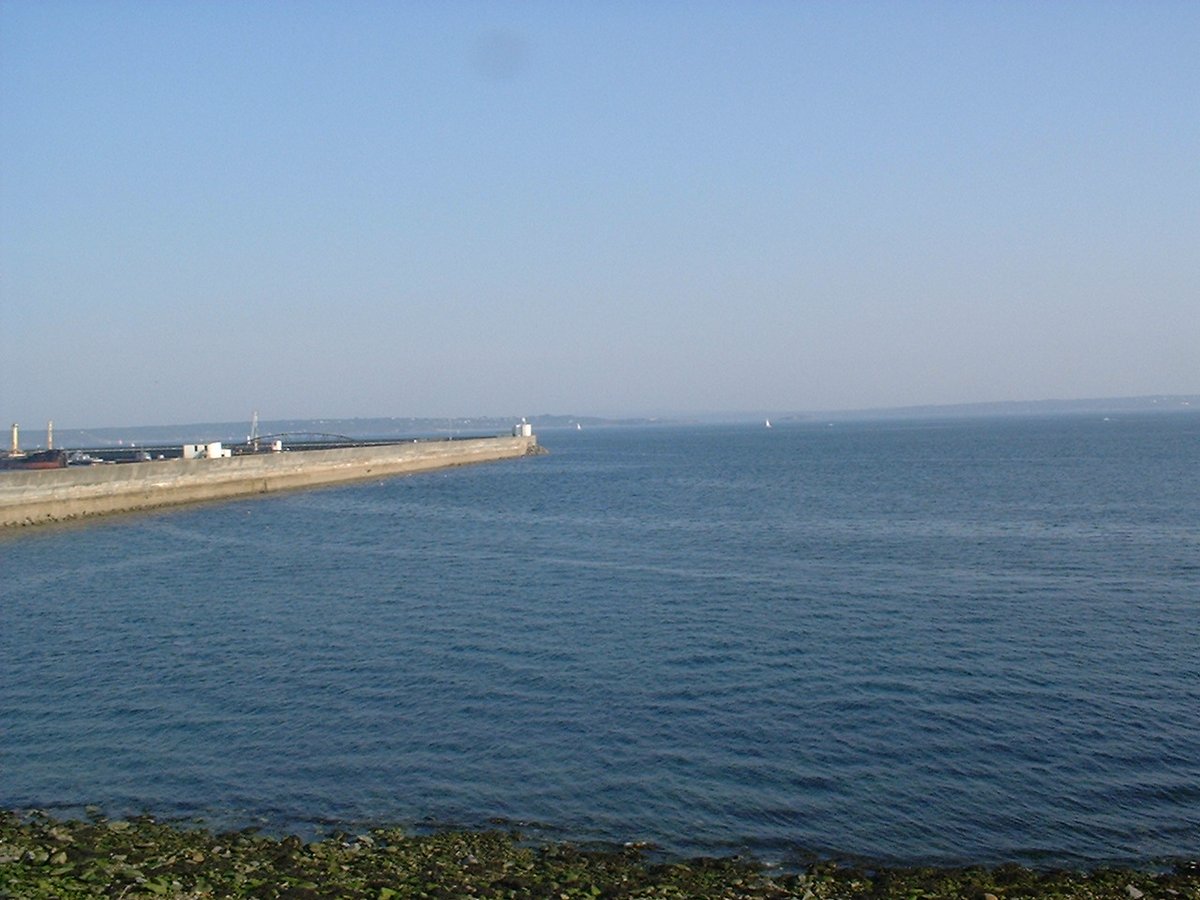
Brest Submarine Base: Visiting Hours, Tickets, and Historical Site Guide
Date: 15/06/2025
Introduction
Located at the western tip of Brittany, France, the Submarine Base of Brest is a formidable symbol of naval power, resilience, and historical significance. Originally developed in the 17th century, Brest has evolved into one of France’s most strategic military ports, home to both centuries-old fortifications and the imposing submarine pens built during World War II. While the base itself remains an active military installation and is not open for public tours, visitors can still immerse themselves in Brest’s rich maritime legacy through nearby museums, harbor tours, and designated viewing points. This comprehensive guide provides detailed historical context, practical visitor information, and tips on how to best experience the enduring legacy of the Brest Submarine Base (France Travel Planner), (BattlefieldsWW2), (Naval Technology).
Table of Contents
- Introduction
- Historical Overview
- Architectural and Technical Features
- Visiting the Brest Submarine Base
- Nearby Attractions
- Frequently Asked Questions (FAQ)
- Summary and Further Reading
- References
Historical Overview
Early Naval Development
Brest’s harbor, protected by the Crozon Peninsula and the mouth of the Penfeld River, was officially designated as a military port by Cardinal Richelieu in 1631. The ensuing centuries saw extensive development, including the construction of dry docks, quays, and the imposing Château de Brest—the world’s oldest fortress still in military use (France Travel Planner). By the 1800s, Brest had become a cornerstone of French naval operations.
Role in World Wars
World War I: Brest served as the main disembarkation port for American troops and supplies, its facilities expanding to accommodate the war effort. The city’s importance was honored by the construction of a monument by the United States, later rebuilt in 1958 after wartime destruction.
World War II: German forces occupied Brest in 1940, constructing massive reinforced concrete submarine pens for U-boat operations. Measuring over 330 meters in length and nearly 200 meters in width, these bunkers—nearly impervious to Allied bombing—became a critical hub for the Kriegsmarine’s Atlantic campaign (BattlefieldsWW2), (Normandy Bunkers). Despite more than 80 bombing raids, the pens survived and remain a testament to wartime engineering.
Postwar Evolution & Modern Use
After Brest’s liberation in 1944, the base was rebuilt and resumed its strategic military role. Today, the Arsenal de Brest remains France’s second most important naval port, with the nearby Île Longue facility serving as the home port for France’s nuclear submarine fleet (MarineLink), (Le Monde).
Architectural and Technical Features
The Brest Submarine Base is defined by its vast concrete submarine pens along the Penfeld River, featuring floating stages for smaller vessels and reinforced structures designed to withstand even the most powerful bombs (Wikipedia). The U-boat bunker—built by the Germans between 1941 and 1942—features a 6.2-meter-thick roof and could shelter up to 20 submarines at a time (Normandy Bunkers).
Visiting the Brest Submarine Base
Access, Viewing Points, and Security
Public Access:
The submarine base is an active military installation. There is no public access inside the base or its U-boat pens. Entry is strictly controlled for security reasons, and photography near the base is generally prohibited (Resonant News), (Normandy Bunkers).
Viewing Opportunities:
You can view the massive submarine pens from public vantage points along Brest harbor, such as Quai Commandant Malbert. Boat tours of the Bay of Brest offer excellent exterior views and historical context, but do not enter the base itself (Ciel Bretagne).
Tickets and Guided Tours
- No entry tickets are sold for the submarine base itself.
- Guided boat tours and walking tours focusing on Brest’s maritime history are available through local operators and the tourist office. These tours provide exterior views of the base and in-depth commentary but do not include access inside the installation.
- The National Maritime Museum at Brest Castle offers ticketed entry, with discounts for students, seniors, and children (Celtic Wanderlust).
Accessibility
- Public viewing areas are generally accessible, though some harbor terrain may be uneven.
- The National Maritime Museum is wheelchair accessible.
Travel Tips
- Best Time to Visit: Spring and early autumn for mild weather and fewer crowds.
- Transportation: Brest is accessible by train, bus, car, and taxi. Local buses serve the harbor and city center.
- Security: Do not attempt unauthorized entry into the military port. Respect all posted signs and instructions from authorities.
Nearby Attractions
- Château de Brest & National Maritime Museum: Extensive naval exhibits within a historic fortress.
- Tour Tanguy: A medieval tower with displays about Brest’s history.
- Océanopolis: A large aquarium featuring marine biodiversity.
- Memorial Montbarey: WWII museum and memorial focused on the city’s liberation.
- Île Longue: Home to France’s nuclear submarine fleet (no public access, but visible from certain coastal points).
Frequently Asked Questions (FAQ)
Q: Can I visit inside the Submarine Base of Brest?
A: No, the base is an active military installation and closed to the public.
Q: Are there any guided tours of the submarine base?
A: No tours enter the base, but boat or walking tours provide exterior views and historical context.
Q: Is photography allowed at the submarine base?
A: Photography is generally forbidden near the base. Exterior photos may be possible from public areas, but always respect security restrictions.
Q: Where can I learn more about Brest’s naval history?
A: The National Maritime Museum in Brest Castle and the Memorial Montbarey are excellent resources.
Q: Are boat tours available?
A: Yes, local operators offer harbor tours featuring exterior views of the base. Book in advance, especially during peak times.
Summary
The Submarine Base of Brest stands as a powerful symbol of France’s naval heritage, from its origins in the 17th century to its vital roles in both World Wars and its current status as a modern military stronghold. Although public access is not permitted, visitors can still appreciate the base’s scale and history from harbor viewpoints, guided boat tours, and the nearby maritime museum. For the best experience, plan ahead, respect security regulations, and use resources like the Audiala app to stay updated on local attractions and events. For further details, visit Normandy Bunkers, MarineLink, and the Brest Tourist Office.
References and Further Reading
- France Travel Planner
- BattlefieldsWW2
- Wikipedia
- Normandy Bunkers
- MarineLink
- Resonant News
- Ciel Bretagne
- Celtic Wanderlust
- Le Monde
- Brest Tourist Office
- Petit Futé
- Ocean Science Technology
